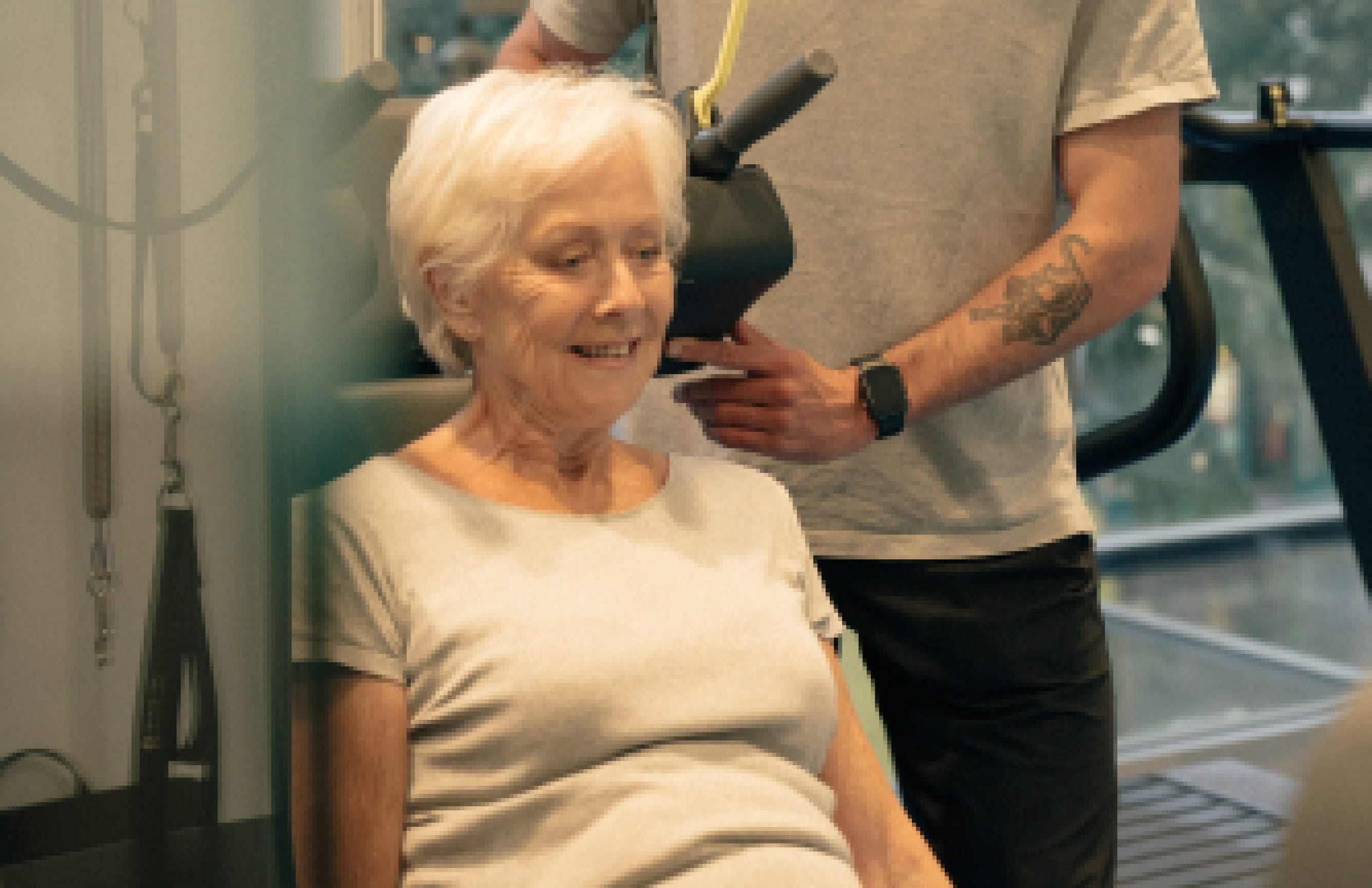Concussion to Dementia: Fact or Fiction?

Claire Small
Chief Clinical Officer & Consultant Physiotherapist
- 26 April, 2017
- Concussion Clinic
- 5 min read
Concussion to Dementia: Fact or Fiction?

For a while now, we’ve been hearing a lot about the link between concussion and dementia and, in particular, Chronic Traumatic Encephalopathy (CTE). CTE is a progressive degenerative brain disease that can only be diagnosed at post-mortem through the atrophy of the brain and the abnormal appearance of Tau proteins (the proteins that hold the neurones together).
Interest in the link between concussion and CTE peaked with the film, ‘Concussion’ and the NFL’s $765 million compensation payment in 2014 and has continued through the publication of studies with questionable research methods that have been jumped on by headline grabbing mainstream media.
This unproven-proven link between the two pathologies has inevitably and not unfairly led to many parents and sports people questioning whether participation in sports at high risk of concussion is worth the risk; you can read more about concussion management and sport here. All we can say at the moment is that this is a theory; there have been no studies that have definitively proven the link between concussion and CTE.
Let’s look at the evidence for this theory and then consider the counter argument and then probably agree that we can’t be sure either way yet.
The story starts with a post-mortem case report on a single NFL player conducted by Dr Bennet Omalu, which was the foundation for the Will Smith film ‘Concussion’. Although undoubtedly a seminal piece of work, the case report, in a bid to protect the subject’s identity, mentions no account of any predisposing factors to CTE. It is thought that the athlete in question is ‘Iron’ Mike Webster, who was rumoured to have a number of contributing factors to dementia, including opioid addiction, alcohol addiction and the use of a Taser to help himself sleep, to mention a few.
More studies have followed this initial piece of work, with one of the most recent being a study by Ling et al. (2017). Ling and colleagues followed 13 professional footballers and one ‘committed amateur’ with dementia over a period of 30 years. Six of the footballers suffered a concussion rate of 1 per career (not a lot) and were all ‘skilled headers of the ball’ (no mention of how the research team objectively measured the last point).
All participants developed signs of degenerative brain disease at an average age of 63.6 years (SD 38 years). Of the six cases that underwent post-mortem investigation, four had signs of CTE. The study grandly concludes by stating that CTE in these retired footballers is related to their past prolonged exposure to repetitive sub-concussive head impacts from heading and head-to-player collisions. They also surmise that the frequency of CTE pathology in the present series represents a significant excess when compared with the 12% average incidence of CTE pathology in elderly individuals with or without neurodegenerative disorders- Not exactly definitive.
Another more comprehensive study by Gardner looked at 164,661 patients admitted to A&E for trauma to the brain and trauma not related to the brain. All patients were over 55 years of age or older and had no pre-existing degenerative brain conditions. Of those that suffered a mild traumatic brain injury, 8.3% went on to develop dementia at 5 year follow up compared to 5.9% in the group with trauma not related to the brain.
On the other side of the coin, there appear to be just as many studies that run contrary to this theory of concussion or sub concussive head impacts leading to dementia.
A 2017 study by McMilan et al, compared the health status of retired rugby players versus social status matched controls at 20 years post retirement. Results demonstrated no significant difference in self-reported general health, depression, anxiety and cognition between groups.
Alosco et al, 2016 measured the presence of plasma t-tau in retired NFL players and aged matched controls. No between group differences in plasma t-tau levels were found in a population of 96 former NFL athletes and 22 controls. This, though, may be that we just can’t rely on plasma t-tau to diagnose the presence of CTE.
It is estimated that the prevalence of dementia in the U.S is 13.7% in over 70s (4) (7.1% in UK over 65’s according to the Alzheimers society). A 2017 study by Janssen and colleagues found that the lifetime incidence of dementia in collegiate American Football players from 1957-70 was 2.3%, 0.3% less than non-football playing athletes at the same college during the same time period.
There is clearly conflicting evidence in this area. CTE is under investigation as it is thought that brain trauma leads to neuronal tearing and subsequent TAU deposits (torn neuron bindings). The mechanism between concussion and dementia is less clear.
Currently, CTE is a neuropathological diagnosis that cannot be made during life. Thus, all modern studies of CTE have been based on autopsy series, while most large epidemiological studies of post-TBI neurodegenerative diseases have been based on clinical diagnoses of common neurodegenerative syndromes. This leaves studies open to a myriad of methodological flaws, with selection bias being the most significant.
As predicted, all we can say for sure at the moment is that we can’t prove the link between concussion and CTE or dementia. What we do know is that the benefits of regular exercise and sports participation on cardiovascular and brain health are undeniable. Physical activity reduces the risk for cardiovascular disease, obesity, hypertension, stroke, and type 2 diabetes. Exercise also enhances psychological health, reduces age-related loss of brain volume, improves cognition, reduces the risk of developing dementia, and impedes neuro-degeneration. This said, the same benefits will exist from playing non-contact sports, in particular, team sports that have been shown to provide increased benefit, especially in a child’s development.
All this considered, it’s really up to the individual to make as an informed choice as possible, though this is easier said than done at present.
Stay in touch:
Twitter: @Theo_Farley
Email: [email protected]
If you’d like to book an appointment with Theo, follow the link or call our Kensington clinic.
References
- Alosco ML, Tripodis Y, Jarnagin J, Baugh CM, Martin B, Chaisson CE, Estochen N, Song L, Cantu RC, Jeromin A, Stern RA. Repetitive head impact exposure and later-life plasma total tau in former National Football League players. Alzheimers Dement (Amst). 2016 Dec 10;7:33-40
- Bennet I. Omalu, Steven T. DeKosky, M.D. Ryan L. Minster, M.S.I.S. M Ilyas Kamboh, Ph.D. Ronald L. Hamilton, M.D. Cyril H. Wecht, M.D., J.D. Chronic Traumatic Encephalopathy in a National Football League Player. Neurosurgery (2005) 57 (1): 128-134.
- The neuropathology of sport. Ann C. McKee, corresponding author Daniel H. Daneshvar, Victor E. Alvarez, and Thor D. Stein. Acta Neuropathol. 2014 Jan; 127(1): 29–51
- B.L. Plassman, a K.M. Langa,c,d,e G.G. Fisher,d S.G. Heeringa,d D.R. Weir,d M.B. Ofstedal,d J.R. Burke,b M.D. Hurd, G.G. Potter, a W.L. Rodgers,d D.C. Steffens, a R.J. Willis, d and R.B. Wallaceg Prevalence of Dementia in the United States: The Aging, Demographics, and Memory Study. Neuroepidemiology. 2007 Nov; 29(1-2): 125–132.
- Raquel C. Gardner, MD; James F. Burke, MD, MS; Jasmine Nettiksimmons, PhD; et al Allison Kaup, PhD; Deborah E. Barnes, PhD, MP, Kristine Yaffe, MD, Dementia Risk After Traumatic Brain Injury vs Nonbrain Trauma The Role of Age and Severity 6 JAMA Neurol. 2014;71(12):1490-1497

Advice
Over the last 20+ years our experts have helped more than 100,000 patients, but we don’t stop there. We also like to share our knowledge and insight to help people lead healthier lives, and here you will find our extensive library of advice on a variety of topics to help you do the same.
OUR ADVICE HUBS See all Advice Hubs

